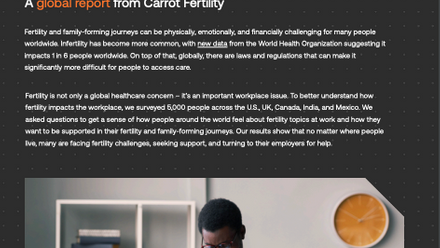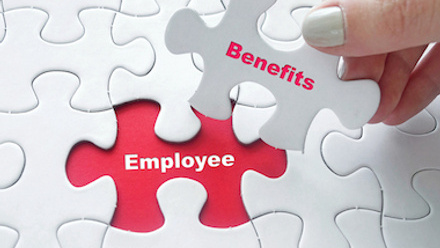Five top tricks for understanding wellbeing priorities and acting on them in your workplace

While global companies are trying to tackle all the same issues as local companies, such as the need to improve recruitment, retention, engagement and productivity whilst also realising cost efficiencies, added complexity comes with the need to design a wellbeing strategy that delivers at a local level without losing global consistency. Generali’s Multinational Employee Benefits, Wellbeing & Total Reward 2018/19 Research showed that wellbeing strategy is predominantly globally led: three in five (60%) of respondents said their position was ‘local but reflects global’.
Cutting through this complexity to understand and act upon employee wellbeing priorities in all jurisdictions in which your organisation operates is no mean feat. It simply has to be underpinned by a framework of close partnership working between you, your intermediary and your providers (health, risk and specialist wellbeing).
Unfortunately, this kind of framework is distinctly lacking. Just under half (46%) of HR respondents – almost two thirds (64%) of which were from mid to large companies with more than 10,000 employees and subsidiaries in at least two countries – say that intermediaries have an influence in helping them identify and establish employee needs. What’s more, regular meetings with their provider are low. For example, less than a fifth (19%) stated they have meetings with their group income protection (IP) provider.
Against this backdrop, here are our top tips for understanding and acting upon wellbeing priorities:
1. Ensure transparency and partnership working with your intermediary and providers. This should be your top priority. It’s only through trust and transparency that you’ll feel comfortable to share essential data (absence, recruitment, retention, mood surveys, Occupational Health reporting etc). And it’s only through the sharing of data that health, risk and specialist wellbeing providers can give employers and their consultants the risk mitigation support they need.
2. Make full use of added-value wellbeing services from your group IP provider. This support includes everything from targeted early interventions, personalised care pathways and even assistance in funding for discrete, tailored, wellbeing initiatives such as absence trackers, if a need is identified.
3. Consider the value of medical claims data. Most insurers will provide you with some degree of scheme reporting, the quality and extent of which varies greatly. Well-designed medical claim reports offer focused information to help benefit managers make important decisions about group cover and implement supplemental health programmes. There are various options in the market, but the best medical reports are those that present data in an aggregated but highly interactive format with drilldown functionality. These allow users to study spending trends and cost drivers at the country level, with data sorted by: population type, benefit and diagnostic categories, medical provider, age, gender, as well as analysis of peak claims and high claimants, and changes in the number of covered lives. Data subsets allow benefit managers to pinpoint root causes for year-over-year changes in utilisation of medical services, including incidence, frequency and unit cost of services.
Daniela Masters, head of health and wellness programmes, Generali Employee Benefits (GEB), comments: “With a comprehensive data set, benefit managers can make informed decisions regarding plan design, terms and conditions, eligibility, provider networks, HR policy and relevant wellness initiatives.
“The best solutions generally involve building closer partnerships and working collaboratively – across HR, reward, health & safety, risk management, and with local insurers – to achieve more informed decision-making at the local and global level.”
4. Set out a framework rather than a policy. Deciding to build a wellbeing programme does not necessarily mean that you need a formal wellbeing strategy. We often find that the ethos in large organisations is that wellbeing is embedded into all plans and policies, rather than existing as an add-on in a standalone, separate policy. In these organisations, wellbeing is mainstreamed in all activities, removing the risk that it becomes a ‘nice to have’ but side-lined exercise.
5. Keep it simple and focused. It’s much better that your people experience your programme rather than read about it. Consider instead operating on a lighter touch basis, encouraging people to follow patterns of behaviour. Have a “house view” on a small number of critical issues; for example, nutrition, mental health and physical activity. Each house view is then supported by specific programmes to tackle those issues, encouraging employees to actually seek out resources as needed and making use of all the added-value wellbeing services available from your existing health and risk insurance providers.
The author is Simon Thomas, director – UK employee benefits, Generali.
This article is provided by Generali UK Employee Benefits.
In partnership with Generali UK Branch
Generali UK provides insurance solutions to the UK employees of multinational clients.







